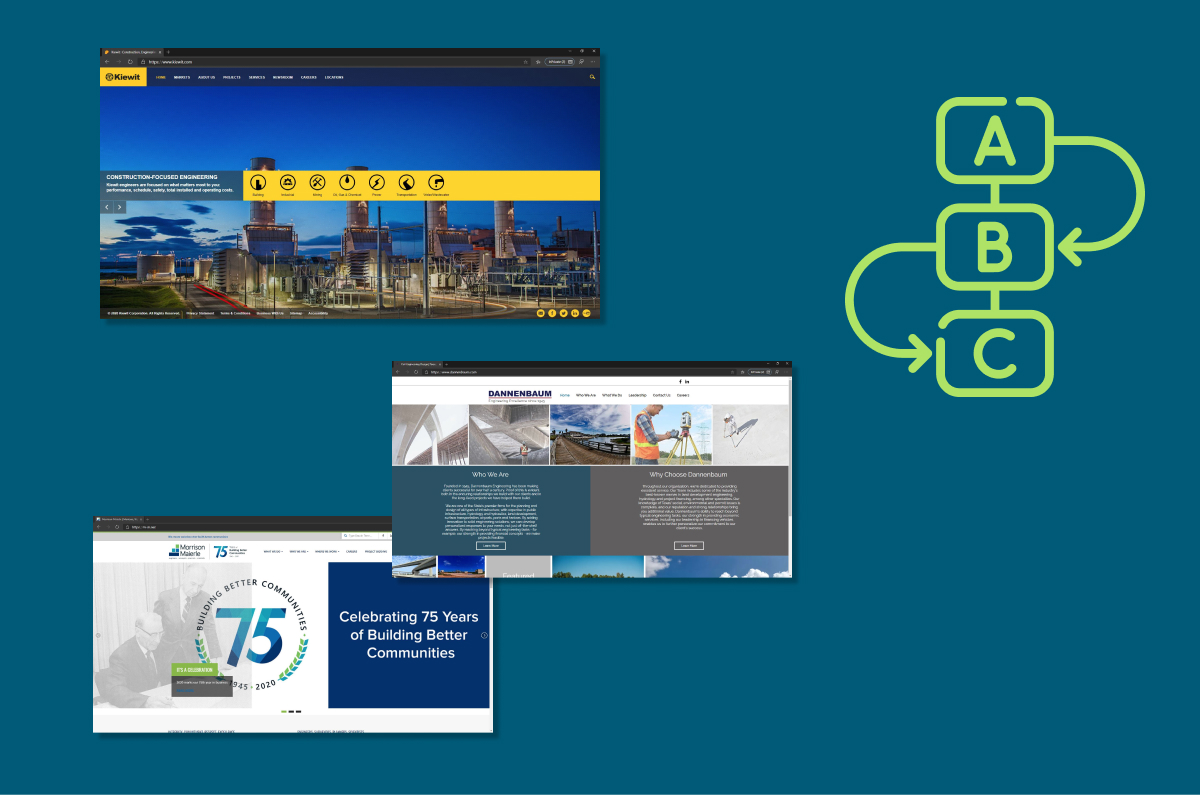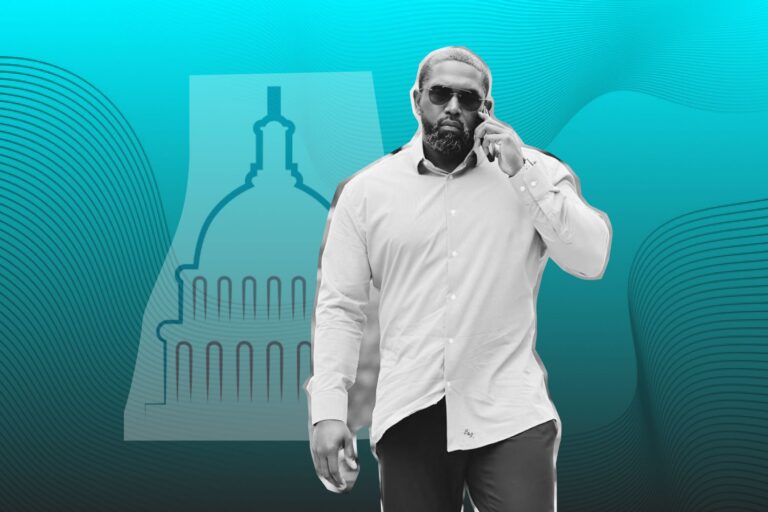How Long Does It Take to Build A Website That Really Works?
Establishing a solid online presence with a stunning website is – beyond any doubt – a “must” for every single business, especially within such a competitive online landscape. When it comes to building out a new website, or redesign an existing one, there are several things to take into consideration. Amongst them, one commonly asked question is “How long is this going to take?”.
How long does it take to build a website that looks great and works? Weeks? Months? …. Or, Years? Let’s read on to get the scoop on the “ins and outs” of what goes into a professionally built website!
Major Types of Website Designs
When speaking about web development, it’s more than vital to define what type of websites you’re referring to. Every website is not designed to function the same way – nor should it be. By understanding your would-be website’s differences, you will grasp a better idea of what is involved as well as keep your expectations properly aligned when heading into this exciting new project.
So, first of all, let’s consider the basic differences in these five typical website designs:
- An online brochure: A 5-10 page website built adopting a pre-existing template and usually intended to communicate very basic information.
- A lead generation tool: A custom-built 15-20 page website that attracts a specific audience of potential customers based on their needs and strong content crafted for SEO (Search Engine Optimization).
- An e-commerce site: A 25-40 page website designed to sell physical products online nationwide, or maybe worldwide.
- A feature-rich website to support operations: A custom-built 30-45 page website that covers essential features – ones that automate internal processes such as dedicated contact forms for various sections, quote request builders or interactive maps and location tools for the company.
- An online catalog: A 75-100 page website that allows online customers to request a quote for products or services offered.

A Brief Look: How the Website Development Process Works?
As already mentioned, every website is distinct – even they fall into the same type or category, there is a world of differences. As a business owner, you will definitely expect your own site having a particular functionality or a specific look. Translating all of that from your head into a fully-working website takes time.
Plus, it’s almost impossible to state that “your website should take exactly two months to build” or something alike. In practice, there is such a myriad of variables to the website development process that time estimates are hard to make. Given that, it’s still of great importance to understand what actually goes on when you hire an agency or freelance designer/coder to develop a website for you.
Here’s how that process might look:
- You “map out” your specific needs or requirements and then share them with the developer or team you’re collaborating with.
- Your partner(s) put together a plan of action, which you need to approve.
- You get to look at some mockups, also known as wireframes, for your site’s design. After considering, you will decide whether to approve them or ask for changes.
- The development and web design process get underway with some back-and-forth between you and your developer(s).
- Afterward, there will usually be a final round of revisions to get everything just right before officially launching the site.
One noteworthy thing is that before a serious developer or agency even begins to code, there is a couple of tasks to be done. If they just jumped into the development process without a solid idea of what you really wish, things would soon get messy. And more importantly, a considerable amount of time – and also money – could end up being wasted.
Even if you only want to build a small website for your SMB, it’s a “should” that you adopt a methodical approach to it. Now, it’s time to have a deeper look and break down how long each of the necessary steps is likely to take!
How Long Does It Take to Build a Website?
Whereas there’s no “one-size-fits-all” answer to the given question, there will be some rough estimates of what it would take to build a standard business website so that you don’t walk away empty-handed.
So, let’s dive into the specific step!
Step 1: Defining Your Needs and Formulating a Plan (1–2 Weeks)
Let’s imagine designing a business website is cooking a meal. And when it comes to cooking, preparation is almost half the battle. Should you know exactly how you wish your final dish to look as well as which the necessary elements are, you’ll end up being a winner in most cases.
In this scenario, you are not going to be doing the actual cooking – or site development. Nevertheless, it’s still imperative that you, as a site owner, clearly define your expectations, mapping out – in great detail – what you would like your website to look like and what its elements should be.
To make it clearer, in this step, you are going to flesh out and understand the true goals and expectations for this website. Who is your site target audience, what is their persona and what are they looking for? What challenges do they have that will be answered by this website and product?
Besides, there are some crucial things to be done before jumping into the execution phase:
- Understanding your company and your goals
- Researching your competition
- Identifying your key products or services (their USP)
- Documenting your goals and determining methods for measuring and analyzing results
Beginning to create a website without these essential considerations is like setting off to an unknown destination without a map. You’re certainly going to get somewhere – but it’s unlikely to be where you had planned ongoing. In this case, whoever you hire will spend a lot of time trying to figure out what you need, which is not a productive use of their time.
Also, always bear in mind that an adept developer will be able to offer some exciting insights you might not come up with otherwise. For instance, they might inform you if a particular feature doesn’t make sense for your website or if the design you have in mind might affect the user experience. Whereas the ultimate decision on how to proceed is yours, it’s advisable that you are open to suggestions, truly listening to and considering what they say.
Should someone immediately jump on board your project without asking too many questions about what you want or making any comments or recommendations, that is a red flag! Your ideal types of developers should be one who asks you a ton of questions before signing on so that they get to have a clear idea of what you need and whether they can deliver it.
In the best-case scenario, this step will take from one to two weeks, involving several rounds of back-and-forth over email, voice, messenger pigeon, or whatever method of communication you prefer.
Step 2: Getting Started on Your Website’s Design (1–3 Weeks)
Once you already form a plan of action in place, it’s time to get started on your website’s design. Normally, your website development partner should have dedicated web designers who will present you with “mockups” of how your future website might appear.
For those who are yet to know, mockups are like sketches on steroids that represents the way the site will look. Building mockups strikes the ideal balance between true-life representation of the end product and ease of modification. Having a great design mockup allows you and your agency to – quickly and easily – ideate and iterate on your site before they start off the actual coding process.

As the design does matter to your site, you are encouraged to meticulously review and require to make changes when necessary. The development stage hasn’t started yet, thus, these revisions shouldn’t set the project back too much.
Furthermore, it’s more than essential that you have an eye on the full mockups of every page you wish your website to include – and of course, they may consist of filler content and images. Make sure you find all the elements – what features each page will include, what their layout looks like, and even how everything will appear on mobile devices – adequately designed before giving a “yes”.
After all, marvelous website design is the result of more than just a sudden burst of creative inspiration. Invest time in the process of creating and developing design concepts will lead to something that creates an emotional connection with the audience and stands out for all the right reasons. Saying that, this stage could take anywhere from one to three weeks – during which, let’s remain an active participant in the process and be proactive about asking questions or requesting changes.
Step 3: Going Through the Main Development Phase (1–2 Months)
As the design is locked down and your website really begins to take shape, let’s move on the most critical stage – where the magic will actually happen.
As soon as your team takes the information you’ve presented them, they turn it into a fully working website that – hopefully – looks just like the mockups you already approved.
Whilst there is no exact figure, you can cast a glance over these hour estimates as a reference. Please note that the following is the time it takes to build a typical “WordPress-based brochure website” without any advanced functionality (and also just six different page templates to be developed from custom web designs).
- Home: 10 hours
- Services overview: 6 hours
- Service detail: 4 hours
- Blog overview: 6 hours
- Blog post: 4 hours
- Contact us: 4 hours
- Responsive views: 6 hours
What’s more, the given figures can be adjusted up to the project scope you previously expected. To be more specific, …
- Number of page templates: add 4-8 hours each
- WooCommerce: add 20-60 hours
- Animations: add 8-20 hours
- Advanced filters: add 2-12 hours
- Content migration: add 20 minutes per page
- Design complexity: add 10-30% for complex background & designs
- Content structure complexity: add 4-20 hours
- Pixel perfect requirement: add 20%, or more if compatibility with legacy browsers is needed
- Custom responsive designs: add 10-30% if there are separate designs for mobile and tablet
- Backend setup
+ ACF: usually the default one, included in the 40 hours
+ Page builder: the same if the developer is experienced with it, otherwise add 10 hours
+ Premium theme: No change if designs are already prepared for it, otherwise add 8-30 hours
This phase is going to take a while, partly because there are always setbacks in any project like this. For instance, you may want to change a key part of the website once you see it in action or there are some problems suddenly arising to your site developer. Either way, it will usually take at least a month to fully develop a properly functioning website for a small business.
Again, it remains vital to stay in touch during this phase. Good developers will keep you in the loop and show you how things are progressing – yet, you can and should be proactive about contacting them as well!
Step 4: Carrying the Final Review before officially launching (1–2 Weeks)
Should your website be yet to go through a final round of revisions, it’s just too early to say that this site is officially finished. Rather than just quickly “run your eye” over the main pages, let’s take a closer look at all site pages, how every part of the website looks and works, and decide if it meets the plan of action you traced out together at the beginning of the development process.
It’s also a “must” to test on all devices and browsers. Why? Undoubtedly, the Internet has significantly grown, so have all the ways to connect to it. Such growth has become somehow a challenge from the web designers’ perspective because every Internet-connected device and browser has its own way of reading and displaying code.
To take a simple example, an image shown on a new iPhone is actually 2x bigger than what you see on the screen due to the technology being employed – the high-resolution retina display does require it. Hence, ideally, your website should look good on 12+ different screen sizes, each with various heights and widths. Since the style-sheets that control a website’s appearance are broken into sections in order to target specific elements on the website, they have to behave differently at different sizes. Be 200% sure that you check that!

In practice, there are always corrections to be made, particularly if you commission a complex website. Nonetheless, the fact is that changes required will rarely bode ill of the development team. Instead, it’s just something to be expected when it comes to web development.
If you have luckily managed to catch most of the big issues during revisions for the earlier steps, there should only be minor fixes left to be made at this point – however, your mileage may vary. In any case, should nothing important be broken or mistaken, this final step is expected to take anywhere from one to two weeks.
What Issues Can “Derail” Your Website Design and Development Project?
Whereas most new websites or site redesigns are completed on time and on budget, there exist some typical issues that can derail your website project and leave it dragging on for months or even years. Let’s discover and steer yourself away from such annoying “roadblocks”.
#1. Skipping the First Step and Consequently Not Setting the Right Goals
Many people always trust their gut, and maybe their gut is telling them that taking the time to research and understand their customers or competitors is just a bunch of baloney. Obviously, the fastest way to get a website finished seems to be just starting off building it right away, right?
Unfortunately, the answer is ALWAYS “no”. As previously discussed, “preparation is almost half the battle”. Rushing a website design without thoughtful planning will inevitably result in one of two things – or both:
- The project gets repeatedly delayed for adjustments
- The final product is underwhelming, to say the least.
After all, if you fail to plan, you are planned to fail!
#2. Delays in Communication Response Time
When it comes to partnering with an external web agency, reliable and consistent interaction between the designers, developers and you, their client, is more than vital. The more complicated that approval procedure is, the longer it will take to nail down details.
Actually, building out a website isn’t always a straightforward job. Even with the most rigorous and exhaustive planning, it can become evident during the project that design or structural adjustments are necessary.
Experienced agencies that have built several professional websites will have methods of streamlining communication in-house. However, designers or developers will sometimes come knocking on your door to ask for insight into an important piece of the puzzle. Delaying that answer can stall the project, especially when more than one group is relying on that answer in order to move forward.
#3. Delays in Content Development
Beyond any doubt, content remains the primary part when it comes to your business website. Since crafting excellent content takes long hours and hard work, it can be easy to overlook this task or give it the pending status.
Designers can often forge ahead adopting the traditional Lorem Ipsum placeholder text, for example, but remember that design and content often go hand-in-hand. Without an accurate understanding of the quantity as well as style of content, the designers might have to take a few steps back when the delivered content doesn’t fit the layout.
To put it simply, a great website requires great content. By putting a priority on developing writing and media that adds value to your site, or by entrusting that task to professionals, you will keep your project from getting bogged down.
The Bottom Lines
Establishing a solid online presence with a stunning website is not a straightforward effort – it’s a major investment of time and money. Even websites that look simple at first glance can take a significant amount of time to build, not to mention the complex ones with plenty of advanced functionality and unique features. When it comes to developing a website for small businesses, it should take anywhere from two to four months – of course, this figure can be adjusted up to your specific expectations and requirements.









